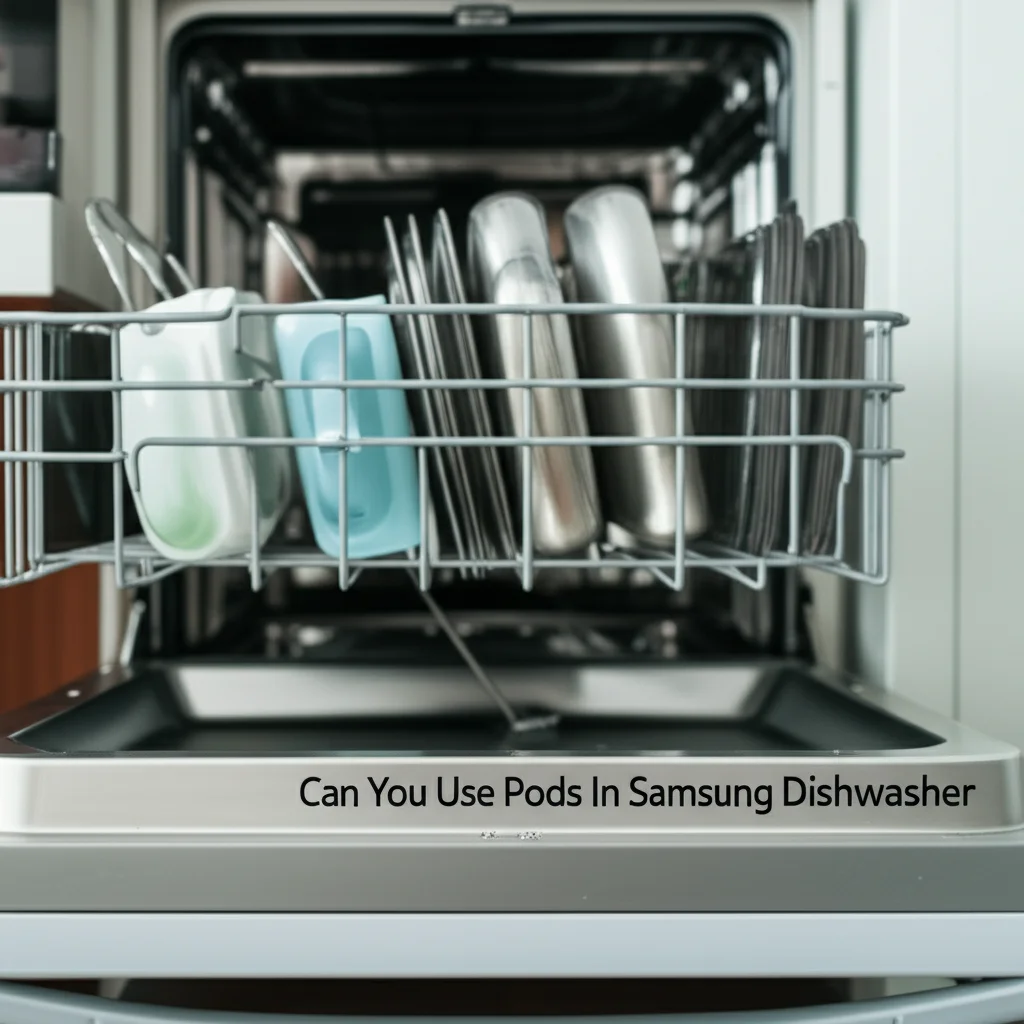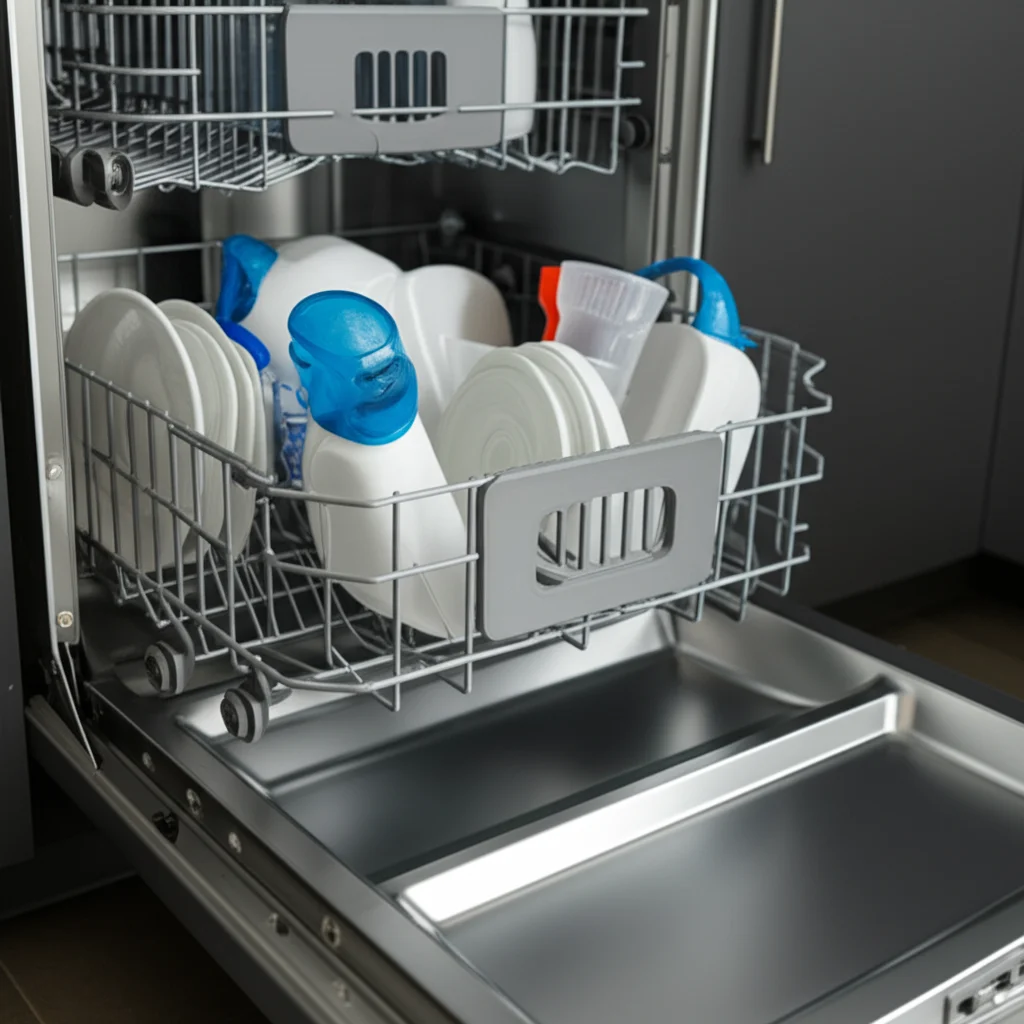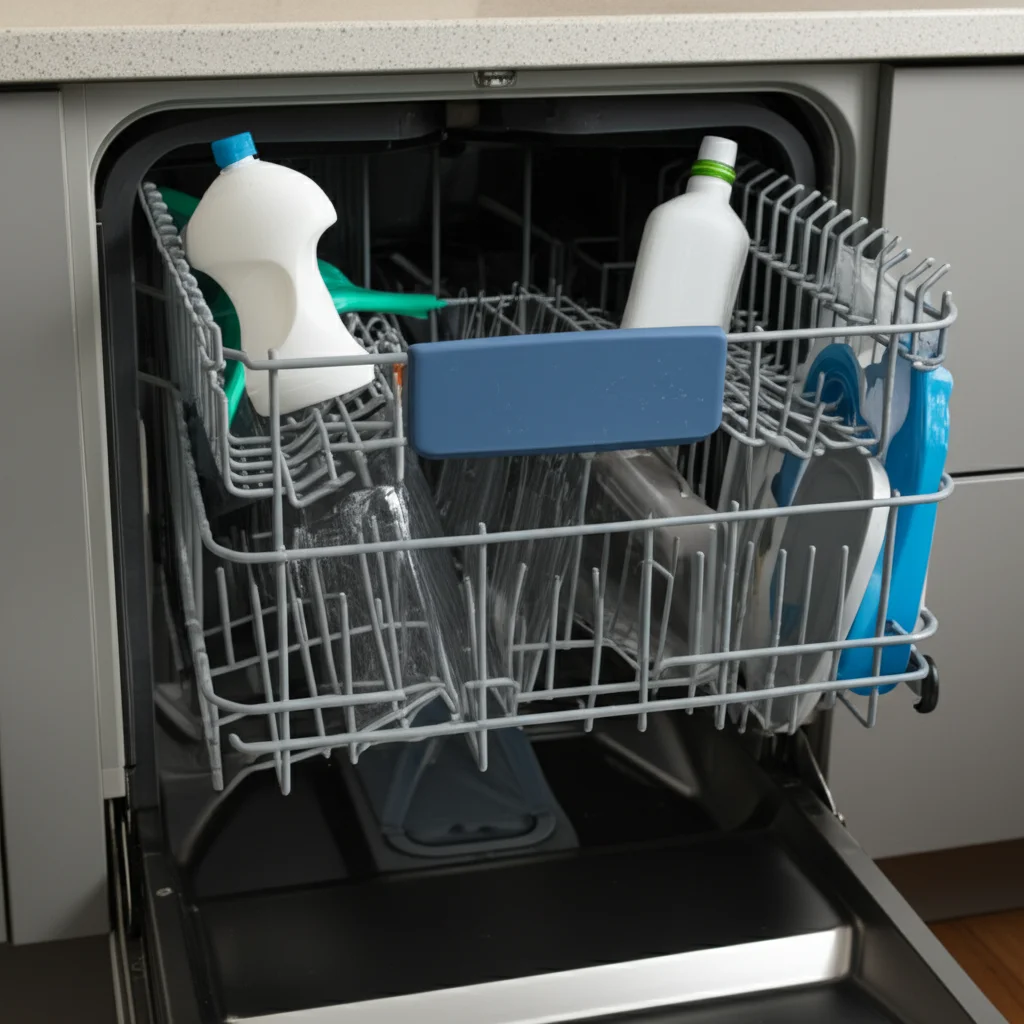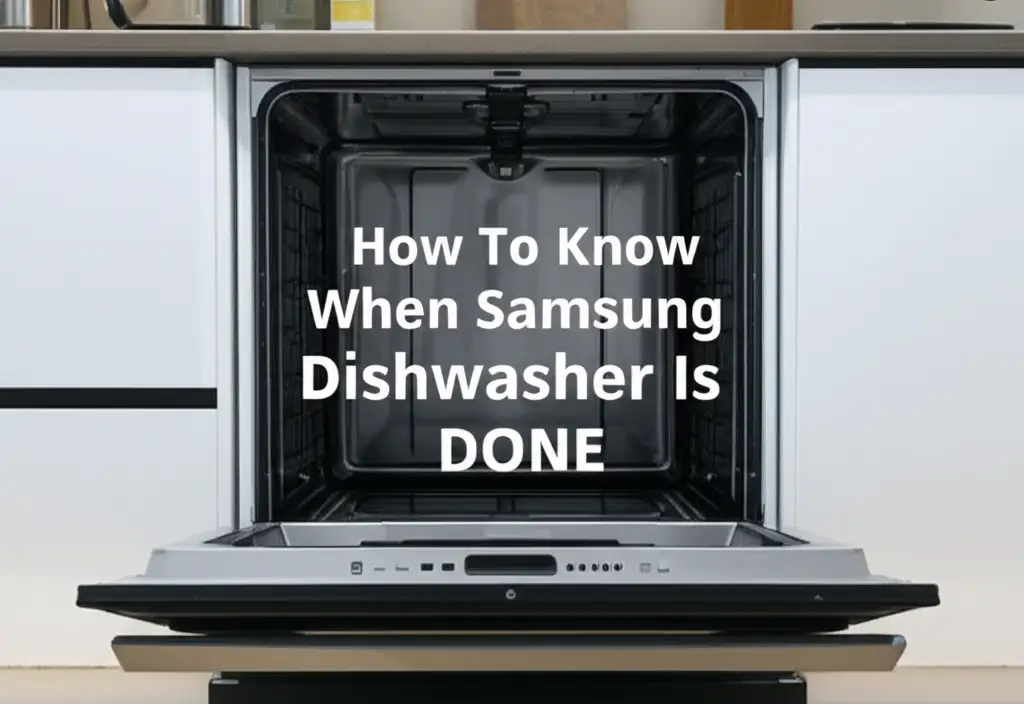· Katria Melrose · Home Appliances · 16 min read
Can You Use Pods In Samsung Dishwasher

Using Pods in Your Samsung Dishwasher: A Complete Guide
Modern kitchens often feature sleek, efficient appliances, and Samsung dishwashers stand out for their innovative design and cleaning power. A common question arises when you own one of these machines: “Can you use pods in a Samsung dishwasher?” The convenience of pre-measured dishwasher pods is undeniable. They promise effortless cleaning without the mess of powders or gels.
This article explores everything you need to know about using detergent pods in your Samsung dishwasher. We will cover proper placement, best practices for optimal results, and common troubleshooting tips. By the end, you will understand how to maximize cleaning efficiency and care for your appliance. You can get spotless dishes with ease.
Takeaway
- Yes, you can use pods in a Samsung dishwasher. Samsung dishwashers are compatible with most standard detergent pods.
- Always place the pod in the main detergent dispenser. Do not put it loose in the dishwasher tub.
- Ensure hot water supply and proper cycle selection for full pod dissolution.
- Regular maintenance like cleaning filters helps ensure optimal performance with pods.
Can you use pods in a Samsung dishwasher?
Yes, you can absolutely use pods in a Samsung dishwasher. Samsung dishwashers are designed to work effectively with various types of dishwasher detergents, including the popular and convenient pods or tablets. For best results, place the pod in the main detergent dispenser compartment. This ensures it releases at the correct time during the wash cycle.
The Convenience of Dishwasher Pods and Samsung Compatibility
Dishwasher pods represent a significant leap in home cleaning convenience. These small, pre-measured packets contain all the necessary cleaning agents for a single wash cycle. You get detergent, rinse aid, and sometimes even a salt substitute all in one simple dose. Many people choose pods because they eliminate the guesswork and mess associated with powders or gels.
Samsung dishwashers are at the forefront of appliance technology. They are built to handle modern detergents like pods with ease. You do not need to worry about incompatibility. Samsung designs their machines to offer excellent cleaning performance across a range of detergent types. This means your appliance is ready for the simplicity that pods offer.
Using pods simplifies your dishwashing routine. You no longer measure out powder or pour liquid detergent. Just grab one pod and place it. This saves time and ensures consistent cleaning results every time you run your dishwasher. I find this convenience incredibly helpful in my busy household.
However, optimal results depend on proper usage. While Samsung dishwashers are compatible, knowing how to use pods correctly makes a big difference. This includes where to put the pod and understanding how it dissolves. Proper use helps you avoid common issues like undissolved detergent or residue on dishes.
Where to Place Dishwasher Pods in Your Samsung Dishwasher
Proper placement of your dishwasher pod is crucial for effective cleaning. Many people wonder if they should just toss the pod into the main tub. The answer is no, this is not the right approach. Your Samsung dishwasher has a specific compartment designed for detergent.
You must always place the dishwasher pod in the main detergent dispenser. This dispenser is usually located on the inside of the dishwasher door. It typically has a latch or a sliding mechanism that opens at a specific point in the wash cycle. This timed release ensures the detergent disperses when the water is hot enough and the wash cycle is ready for cleaning.
Placing the pod anywhere else can lead to poor results. If you put it in the pre-wash cup, it will dissolve too early. This wastes detergent and leaves your dishes less clean. Placing it loosely at the bottom of the dishwasher tub can also cause issues. The pod might dissolve too quickly, not at all, or interfere with the spray arms. For detailed guidance on specific pod placement, you can refer to resources like where to put Finish dishwasher pods.
My experience shows that correctly placing the pod makes all the difference. Always check your Samsung dishwasher’s manual if you are unsure about the dispenser location or operation. Most Samsung models have a straightforward, clearly marked dispenser. Open the compartment, insert one pod, and close the lid firmly. This simple step ensures your dishwasher pod works as intended, delivering clean dishes cycle after cycle.
Optimizing Performance: Tips for Using Pods in Samsung Dishwashers
Getting the best performance from your Samsung dishwasher with pods goes beyond just placement. Several factors influence how well your dishes get clean. Understanding these elements helps you achieve spotless results every time. I have learned these tips through my own use and testing.
First, water temperature plays a vital role. Dishwasher pods, especially those with solid components, need hot water to dissolve fully. Ensure your hot water heater is set to at least 120°F (49°C). You can also run the hot water at your kitchen sink for a minute before starting the dishwasher. This fills the lines with hot water, giving your cycle a better start.
Next, consider your loading technique. Do not block the detergent dispenser. Large items like baking sheets or platters can obstruct the dispenser door from opening fully. This traps the pod and prevents it from dissolving. Always arrange dishes so that the dispenser has a clear path to open. This ensures the pod releases into the water flow properly.
Selecting the right wash cycle also matters. For heavily soiled loads, a longer cycle like “Heavy” or “Sanitize” provides more time for the pod to dissolve and for the enzymes to work. Shorter cycles, like “Quick Wash,” might not always give the pod enough time or hot water to fully activate, especially if your water supply isn’t instantly hot.
Hard water can also affect performance. Minerals in hard water can interfere with detergent effectiveness and leave residue. If you have hard water, consider using a pod that includes a water softener. Alternatively, use a separate rinse aid, which helps combat hard water spots. You might also consider cleaning calcium buildup in your dishwasher regularly. This helps maintain efficiency, and you can find useful tips on how to clean calcium buildup in dishwasher for more details.
Finally, resist the urge to pre-rinse your dishes excessively. Many modern pods contain enzymes designed to break down food particles. If you pre-rinse too much, these enzymes have nothing to work on. This can sometimes lead to etching or a hazy film on dishes, as the enzymes are over-concentrated. Just scrape off large food scraps, and let the pod do its job. For general guidance on loading, you can refer to how to prepare dishes for dishwasher.
Common Issues When Using Dishwasher Pods and How to Fix Them
Even with the convenience of dishwasher pods, you might occasionally encounter issues. Understanding these common problems and their solutions helps you maintain clean dishes and a healthy appliance. I have faced these challenges myself and found effective ways to deal with them.
One frequent complaint is the pod not dissolving fully. This can leave a gooey residue in the dispenser or on your dishes. Several factors contribute to this. First, check your water temperature. If the water entering the dishwasher is not hot enough, the pod may struggle to break down. Ensure your hot water heater is set correctly, or run hot water at the sink before starting the cycle. Second, make sure the dispenser door is not blocked by dishes. Large plates or pots can prevent the door from opening completely, trapping the pod. Rearrange your load to give the dispenser clear access. Third, check the age and storage of your pods. Old or moisture-damaged pods may not dissolve well. Store them in a cool, dry place.
Another issue is residue or a film left on dishes. This can stem from several causes. Hard water is a common culprit. Minerals in hard water combine with detergent, leading to spots or a cloudy film. Using a rinse aid can significantly reduce this problem. Some pods also include rinse aid, but adding extra might be necessary in very hard water areas. Over-sudsing can also cause residue. This happens if you use too many pods or if your water is exceptionally soft. One pod is usually enough. If you frequently see residue, ensure your dishwasher is clean inside. Old food particles or sludge build-up can redeposit onto dishes.
Sometimes, you might notice white streaks or etching on glassware. This is often caused by using too much detergent, especially in soft water areas. The high alkalinity of the detergent can react with glass. Try a different brand of pod or consider using less detergent if you switch to powder. If your spray arms are clogged, water might not reach all dishes effectively, leading to poor rinsing and residue. Regularly clean your spray arm nozzles. For a deeper clean of your machine, you can follow guides like how to clean dishwasher with vinegar.
Lastly, a dishwasher that smells bad can also indicate a problem. This might not directly relate to pods but can affect overall cleaning. Food particles and mold can build up over time. If you notice strange odors, a thorough cleaning of your dishwasher is necessary. This will ensure your pods can work effectively in a clean environment.
Maintaining Your Samsung Dishwasher for Pod Compatibility
Proper maintenance is essential for any appliance, especially your Samsung dishwasher. When using pods, a well-maintained dishwasher ensures optimal cleaning performance and prevents common issues. Regular care extends the life of your appliance. I make it a point to perform these checks myself.
The filter is a critical component that needs regular cleaning. Food particles, grease, and other debris get trapped in the filter. If the filter becomes clogged, water flow is restricted. This prevents proper spray, dissolution of the pod, and effective draining. Many Samsung dishwashers have a removable filter, usually at the bottom of the tub. Check your manual for specific instructions on how to access and clean it. You might find a link like where is filter in Samsung dishwasher helpful for locating it. Cleaning the filter is simple: remove it, rinse it under hot water, and use a soft brush to scrub away stubborn debris. For general filter cleaning tips, check out how to clean filter in dishwasher.
Beyond the filter, inspect the spray arms. These arms have small holes that spray water onto your dishes. If these holes become clogged with food particles or mineral deposits, the water distribution suffers. Use a toothpick or a small brush to clear any blockages. Ensure the spray arms spin freely.
The drain and pump also require occasional attention. If your dishwasher is not draining properly, it can leave standing water. This affects the cleaning cycle and can prevent pods from dissolving correctly. While you may not need to clean the pump frequently, if you notice drainage issues, it is worth checking. Clearing the drain line or ensuring no large blockages are present is important.
Finally, regular deep cleaning of the entire dishwasher is crucial. Even with pods that claim to clean the dishwasher, food debris and detergent residue can build up over time. This leads to odors and reduced efficiency. I recommend running an empty cycle with a dishwasher cleaner, vinegar, or baking soda once a month. You can learn more about how to deep clean your appliance by visiting resources like clean a dishwasher how to deep and how to clean the inside of a dishwasher. This systematic approach to maintenance keeps your Samsung dishwasher running efficiently with pods.
When to Choose Other Detergent Types for Your Samsung Dishwasher
While dishwasher pods offer great convenience, they are not always the best solution for every situation. Sometimes, choosing a different detergent type can provide better results or more flexibility. Understanding when to use powder or gel can save you hassle.
One main reason to consider alternatives is water softness. If you live in an area with very soft water, pods can sometimes cause over-sudsing or leave a film on dishes. Pods contain a pre-measured amount of detergent designed for average water hardness. With soft water, this amount might be too much. Powder or gel detergents allow you to reduce the dosage. This prevents residue and ensures cleaner dishes. For more alternatives, you can check what can you use instead of dishwasher tablets.
Another factor is customization for specific cleaning challenges. Some situations might benefit from a more precise detergent amount. For example, if you have only a lightly soiled load, you might use less powder or gel. Pods provide a fixed dose, which can be overkill for small or lightly dirty loads. This can save you money on detergent in the long run.
Powder detergents can also be more cost-effective per wash than pods. If budget is a primary concern, buying in bulk powder might be a more economical choice. You also have control over the quantity, allowing for flexibility based on load size and soil level.
Gel detergents offer quick dissolution, which can be beneficial in older dishwashers or in situations where water temperature is a concern. They dissolve almost instantly, even in cooler water, reducing the risk of detergent residue. However, gels often lack the enzyme power of powders or pods, so they might not be as effective on dried-on food.
Ultimately, the best detergent type depends on your specific needs, water conditions, and preferences. While pods are highly convenient for most Samsung dishwasher users, having alternatives in mind provides flexibility. I recommend experimenting to see what works best for your home.
Environmental and Safety Aspects of Dishwasher Pods
Using dishwasher pods comes with important environmental and safety considerations. Understanding these aspects helps you make responsible choices for your home and the planet. I always keep these points in mind when handling and storing pods.
First, child safety is paramount. Dishwasher pods often resemble candy or toys due to their colorful appearance and squishy texture. This poses a severe poisoning risk for young children. Always store dishwasher pods in their original, child-resistant packaging. Keep them in a high, locked cabinet, completely out of reach and sight of children. Never leave individual pods lying around. This simple step can prevent a serious accident.
Second, consider the environmental impact of pods. Many pods use water-soluble film, which reduces plastic waste compared to traditional plastic bottles of liquid detergent. However, the chemicals inside the pods can still impact waterways. Look for pods with eco-friendly certifications or those labeled as biodegradable. Some brands focus on using plant-based ingredients and avoiding harsh chemicals like phosphates, which can contribute to algae blooms in water bodies. Choosing such products helps minimize your environmental footprint.
The packaging of pods also matters. While the film often dissolves, the outer container is usually plastic. Opt for brands that use recycled content in their packaging or offer larger, refillable options. Some companies are exploring compostable or paper-based packaging for pods, which would be a significant environmental improvement.
Finally, proper disposal of any remaining packaging is important. Recycle plastic containers where facilities exist. Do not flush pods down the toilet or dispose of them in a way that could introduce chemicals directly into the environment. When handling pods, avoid direct skin contact if you have sensitive skin, as the concentrated detergents can cause irritation. Always wash your hands after handling pods. By being mindful of these safety and environmental factors, you can use dishwasher pods responsibly and effectively in your Samsung dishwasher.
FAQ Section
Q1: Can I put a dishwasher pod in the bottom of a Samsung dishwasher?
No, you should not put a dishwasher pod in the bottom of a Samsung dishwasher. Always place the pod in the main detergent dispenser located on the inside of the door. Placing it loosely in the tub can cause it to dissolve too quickly or prevent proper distribution. This leads to less effective cleaning and potential residue on dishes.
Q2: Why is my Samsung dishwasher not dissolving the pod?
Several reasons might cause a pod not to dissolve in your Samsung dishwasher. The water might not be hot enough; ensure your hot water supply is adequately warm. The dispenser door could be blocked by dishes, preventing it from opening fully. Also, old or moisture-damaged pods can sometimes fail to dissolve properly.
Q3: Do Samsung dishwashers need rinse aid with pods?
Yes, Samsung dishwashers often benefit from rinse aid even when using pods that claim to include it. Rinse aid helps prevent water spots, improve drying, and ensure streak-free dishes, especially if you have hard water. Check your Samsung dishwasher’s rinse aid indicator and refill it as needed for optimal results.
Q4: How often should I clean my Samsung dishwasher when using pods?
You should clean your Samsung dishwasher about once a month, especially when regularly using pods. This frequency helps prevent the buildup of food particles, grease, and detergent residue. Regularly clean the filter after every few washes. A deeper clean ensures the dishwasher runs efficiently and your dishes come out spotless.
Q5: Are all dishwasher pods compatible with Samsung dishwashers?
Generally, all major brands of dishwasher pods are compatible with Samsung dishwashers. Samsung designs its appliances to work with standard detergent types. However, choose reputable brands and ensure the pods are not expired or damaged. If you experience issues, trying a different brand of pod might resolve them.
Q6: Can I use two pods in my Samsung dishwasher for very dirty dishes?
Using two pods in your Samsung dishwasher for very dirty dishes is generally not recommended. One pod is usually sufficient for a full load, even heavily soiled. Using two pods can lead to over-sudsing, excessive residue on dishes, or even etching on glassware. It also wastes detergent and can be counterproductive to cleaning.
Conclusion
The answer to “Can you use pods in a Samsung dishwasher?” is a resounding yes. These convenient, pre-measured cleaning packets are fully compatible with Samsung’s innovative appliances. By understanding the proper placement in the main detergent dispenser and following a few key best practices, you can achieve sparkling clean dishes with minimal effort. Remember to ensure your water is hot enough, load your dishes to avoid blocking the dispenser, and select the appropriate wash cycle.
Maintaining your Samsung dishwasher is also vital for optimal performance with pods. Regularly cleaning the filter, inspecting the spray arms, and performing periodic deep cleans will keep your appliance running smoothly. While pods offer unparalleled convenience, knowing when to consider alternative detergent types can also be beneficial, especially in areas with very soft or very hard water. Prioritizing child safety and environmental considerations when using and storing pods ensures responsible appliance care. Embrace the ease of dishwasher pods and enjoy a consistently clean kitchen.
Do you have any personal tips for using pods in your Samsung dishwasher? Share your experiences and insights in the comments below. Explore other articles on our site for more home appliance care guides!





